Rubber edging for landscaping is a versatile and environmentally friendly material that has become increasingly popular in recent years. It is made from recycled rubber, making it an eco-friendly option for those looking to reduce their carbon footprint. This type of edging offers numerous benefits, including easy installation, flexibility, and low maintenance, making it a top choice for both professional landscapers and DIY enthusiasts.
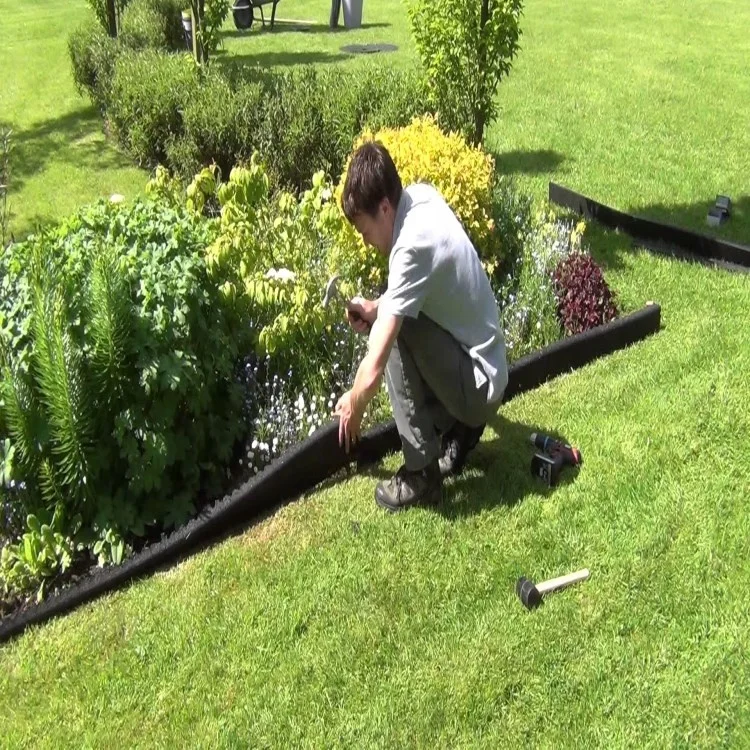
One of the main advantages of rubber edging is its ease of installation. Unlike traditional edging materials such as concrete, wood, or metal, rubber edging does not require any specialized tools or equipment. It can be easily cut with a utility knife and can be installed by simply pushing it into the ground. This makes it a great option for those who want to tackle their landscaping projects themselves without the need for professional help.
Another benefit of rubber edging is its flexibility. It can be easily bent and shaped to fit any landscape design, whether it’s a straight line or a curved border. This flexibility also allows for easy customization, as the edging can be cut to any desired length. This makes it a great option for irregularly shaped gardens or for creating unique and creative designs.
In addition to its versatility, rubber edging is also highly durable. It is designed to withstand harsh weather conditions, including extreme temperatures, heavy rain, and UV rays. This means that it will not crack, rot, or fade over time like other traditional edging materials. Its durability also makes it a cost-effective option in the long run, as it does not need to be replaced frequently.
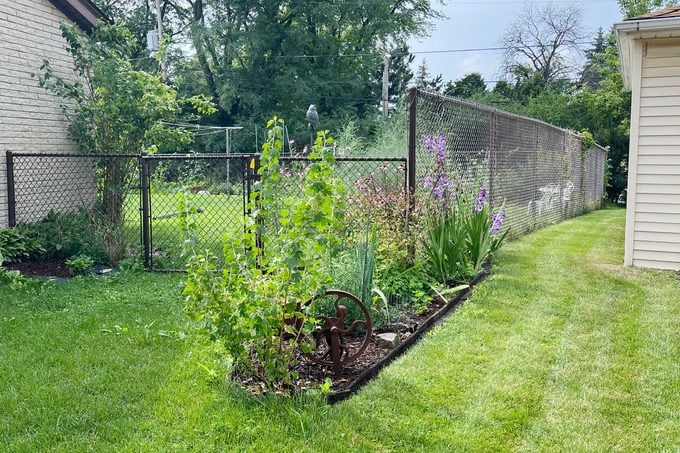
Moreover, rubber edging requires minimal maintenance. Unlike wood or metal edging, which may require regular painting or staining, rubber edging does not need any upkeep. It is resistant to mold, mildew, and pests, making it a low-maintenance option for busy homeowners. Additionally, it is easy to clean with just a simple rinse or wipe down, making it a practical choice for those who want to spend less time on yard work.
Aside from its functional benefits, rubber edging also has aesthetic appeal. It comes in a variety of colors and textures, allowing you to choose the one that best complements your landscape design. Whether you prefer a natural look or a more modern and sleek appearance, there is a rubber edging option to suit your style.
Furthermore, using rubber edging for landscaping is an environmentally friendly choice. As mentioned earlier, it is made from recycled rubber, which helps reduce waste and conserve natural resources. By using this material, you are not only improving the look of your landscape but also contributing to a greener environment.
When it comes to installation, there are a few things to keep in mind to ensure that you make the most out of your rubber edging. First, it is important to properly prepare the area where you will be installing the edging. This includes removing any debris, leveling the ground, and creating a clean and straight edge for the edging to sit on.
Next, make sure to measure and cut the edging to fit your desired length and shape. If you need to make any curves or corners, use a utility knife to carefully cut the edging to the desired shape. Once the edging is cut, simply push it into the ground, making sure it is level and secure.
To maintain the appearance of your rubber edging, it is recommended to periodically clean it with a mild soap and water solution. This will help remove any dirt or debris that may accumulate over time. Additionally, if you notice any loose or damaged sections, it is important to repair or replace them to ensure the edging remains effective.
In conclusion, rubber edging for landscaping is a versatile and eco-friendly material that offers numerous benefits. Its easy installation, flexibility, durability, low maintenance, and aesthetic appeal make it a top choice for any landscaping project. By following proper installation and maintenance techniques, you can make the most out of this innovative material and create a beautiful and sustainable landscape design.
How to Use Rubber Edging for Landscaping?
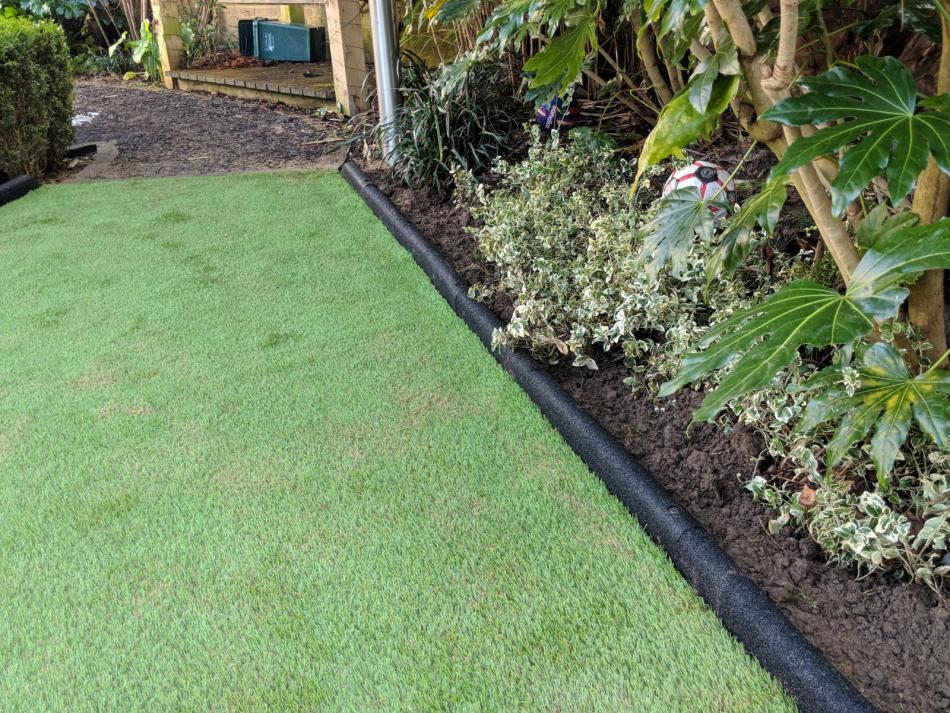
Using rubber edging for landscaping is a simple and straightforward process. Here are some steps to help you get started:
Step 1: Prepare Your Landscape
Before installing rubber edging, it is essential to prepare your landscape by removing any existing edging, weeds, or debris. Make sure the ground is level and free of obstacles to ensure a smooth installation process.
Step 2: Measure and Cut the Edging
Measure the length of the area where you want to install the rubber edging and cut it accordingly. You can use a utility knife or heavy-duty scissors to cut the edging to your desired length.
Step 3: Dig a Trench
Using a spade or shovel, dig a trench along the perimeter of your landscape, deep enough to accommodate the height of the rubber edging.
Step 4: Install the Edging
Place the rubber edging into the trench, making sure it sits firmly against the ground. You can use landscaping spikes or stakes to secure the edging in place.
Step 5: Fill the Trench
Fill the trench with soil, making sure the edging remains in place. You can also add mulch or gravel for a more polished look.
Using rubber edging for landscaping is a DIY-friendly project that requires minimal tools and expertise. However, if you are not confident in your skills, it is always best to hire a professional landscaper for the installation.
Examples of Rubber Edging in Landscaping
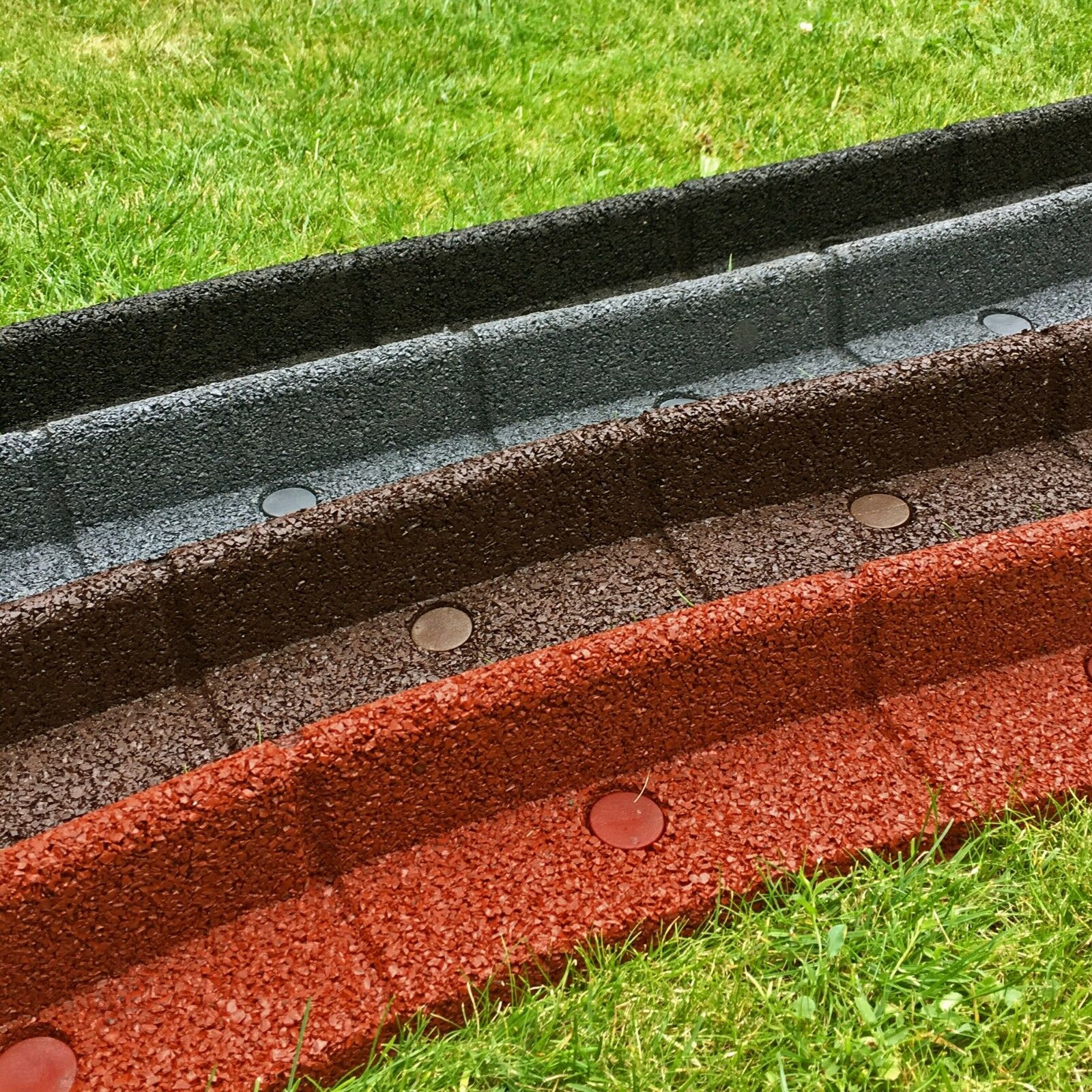
Rubber edging can be used in various ways to enhance the look and functionality of your landscape. Here are some examples of how you can use rubber edging in your outdoor space:
1. Garden Beds
Rubber edging provides an excellent border for garden beds, keeping them neatly separated from the rest of the lawn. Its flexibility allows you to create curved or straight edges, depending on your preference.
2. Pathways
Rubber edging can also be used to outline pathways or walkways in your landscape. It helps define the path and keeps gravel or mulch from spilling onto the surrounding areas.
3. Tree Rings
Creating a tree ring with rubber edging is a great way to protect your trees while adding an aesthetic touch to your landscape. It also prevents grass and weeds from growing around the base of the tree.
4. Play Areas
Rubber edging is a safe and cushioned option for children’s play areas. It creates a barrier between the play area and the rest of the yard, reducing the risk of accidents.
5. Border for Water Features
If you have a pond, fountain, or other water features in your landscape, rubber edging can provide a clean and defined border. It also prevents debris from falling into the water, making maintenance easier.
Comparing Rubber Edging to Other Materials
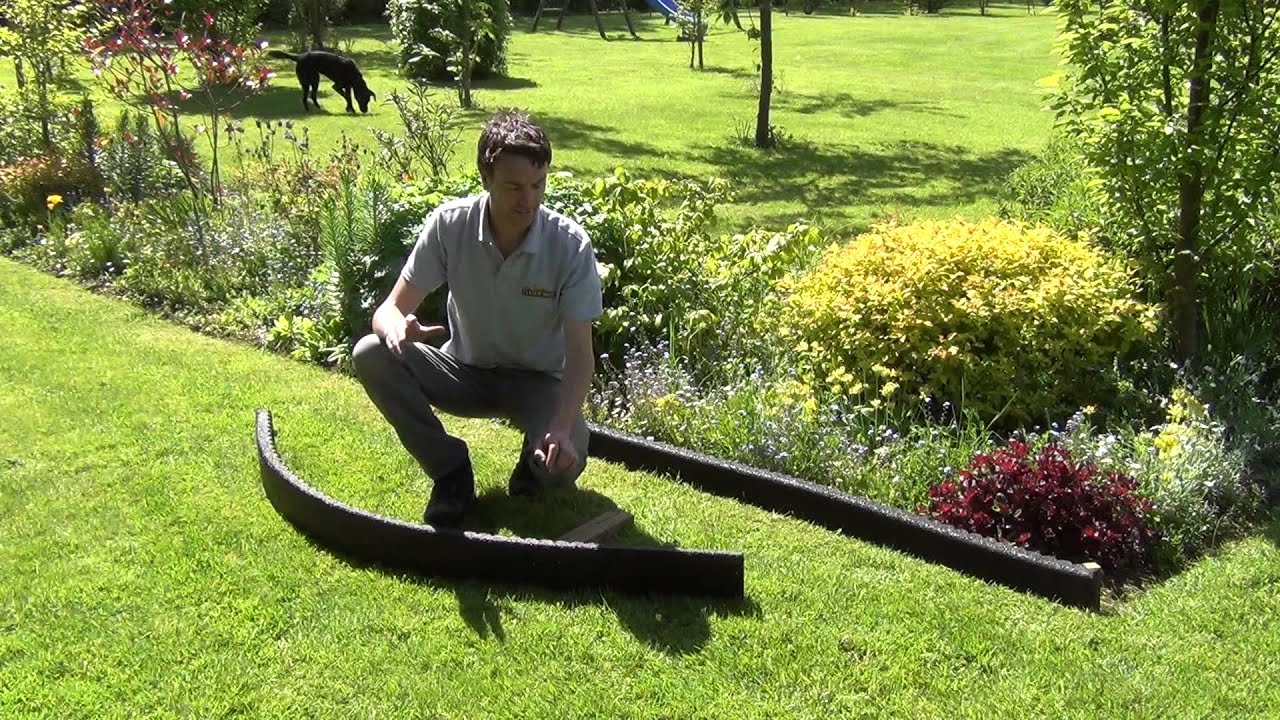
When it comes to landscaping materials, there are many options to choose from. Here are some comparisons between rubber edging and other popular materials to help you make an informed decision:
Rubber Edging vs. Wood
Wooden edging can rot, warp, or get infested with pests over time. On the other hand, rubber edging is durable and long-lasting, making it a more sustainable option for your landscape.
Rubber Edging vs. Concrete
Concrete edging can be expensive and challenging to install, while rubber edging offers easy installation with no special tools required. Additionally, concrete is not flexible, which can be a problem if you want to create curved edges in your landscape.
Rubber Edging vs. Metal
Metal edging can rust, corrode, or get damaged by harsh weather conditions. Rubber edging, on the other hand, is resistant to extreme temperatures, making it an excellent choice for any climate.
Tips and Advice for Using Rubber Edging in Landscaping

Here are some tips and advice to help you make the most out of your rubber edging:
- To ensure a perfect fit, measure your landscape carefully before purchasing rubber edging.
- For a secure installation, use landscaping spikes or stakes every few feet along the edging.
- Make sure to leave a small gap between each section of the edging to allow for expansion during hot weather.
- Avoid using a lawnmower or weed trimmer near the edging to prevent damaging it.
- Regularly clean your rubber edging with soap and water to maintain its appearance and prevent buildup of debris.
Frequently Asked Questions about Rubber Edging for Landscaping
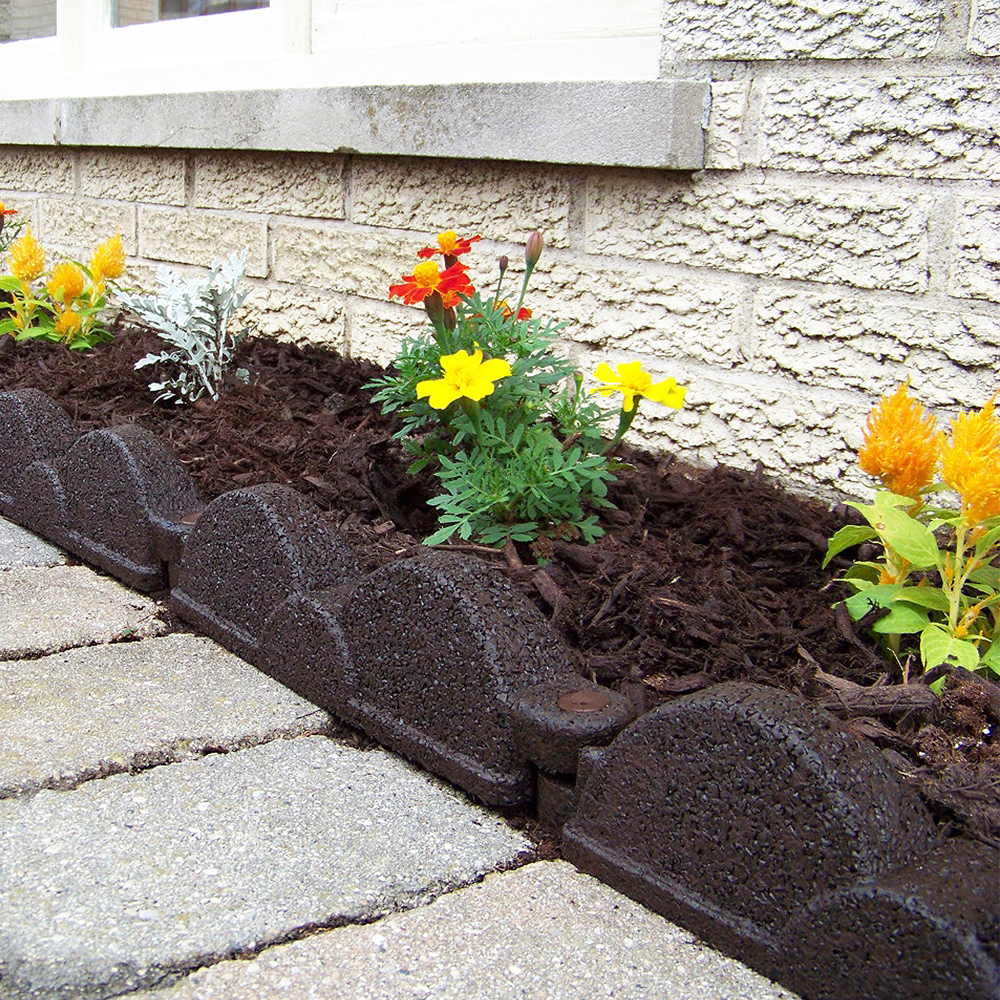
1. Can I use rubber edging for steep slopes?
Yes, rubber edging is a versatile material that can be used on steep slopes without any issue. It provides a secure border, preventing soil erosion and keeping your landscape intact.
2. Is rubber edging safe for pets?
Yes, rubber edging is pet-friendly and does not contain any harmful chemicals. However, it is always best to supervise your pets in the landscape to avoid any accidents.
3. How long does rubber edging last?
Rubber edging can last up to 10-15 years with proper maintenance and care.
4. Can I paint my rubber edging?
Yes, you can paint your rubber edging using exterior latex paint to match your landscape’s color scheme.
5. Is rubber edging environmentally friendly?
Yes, rubber edging is made from recycled materials, making it an eco-friendly choice for your landscape.
Conclusion
Rubber edging for landscaping offers numerous benefits, making it a popular choice among homeowners and landscapers alike. Its durability, flexibility, and low maintenance make it an excellent alternative to traditional edging materials. With the tips, examples, and comparisons mentioned in this article, you now have all the information you need to incorporate rubber edging into your landscape and elevate its overall look and functionality. So go ahead and give your outdoor space a unique touch with rubber edging!
